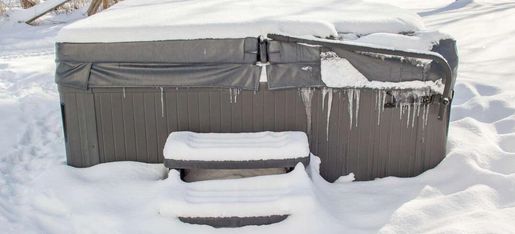Hot Tub Chemical Instructions
Hot Tub Chemical Instructions
Chemicals should be tested 1-2 days per week (every week)
Stain & Scale
Add 1-2 ounces of Stain and Scale 1 day per week.
Stain & Scale prevents minerals from scaling onto the heater element, pipes, and the internal pump components.
Alkalinity
Test and balance alkalinity 1 day per week.
If alkalinity is low, add two heaping teaspoons of Alkalinity Up at a time. Wait 20 minutes between tests and add as needed. Alkalinity is the stabilizer for pH.
pH
Test and balance pH one day per week.
The pH level is important because it helps to prevent corrosion to the seals, gaskets and heater element. Additionally, covers and pillows will last longer with proper pH balance.
Non-Chlorine Shock
Add 3 heaping teaspoons of shock per 250 gallons one day per week.
Shock helps to oxidize the used chlorine and dead organic materials in your hot tub water. After adding shock, turn on all pumps and leave the hot tub cover open for 20 minutes.
Chlorine
After adding shock, chlorine should be tested and added as needed. Add two heaping teaspoons at a time and wait 20 minutes between tests.
Filters
Filters should be pulled from the tub and rinsed at each drain and clean, and every 4-6 weeks in between. Lack of filter cleaning will result in frequently clogged filters, which will diminish your water quality, and may even lead to a repair if left untreated.
*FOLLOWING EVERY USE*
Add 1 heaping teaspoon of chlorine immediately after EVERY use.
The maximum dose at any time is 4 heaping teaspoons. If the hot tub has been used by several people throughout the day, test and add chlorine, as needed, the following day.
It is essential that a chlorine level of 3-5 ppm is reached following heavy use. If you have added more than 4 heaping teaspoons of chlorine to your water and still haven't managed to get a free chlorine reading, you have contaminated water.
Call or text us for advice immediately! 413-519-3269
Click here to download a printable copy of our chemical instructions.

Frequently Asked Maintenance Questions
FAQ's
Q: Why is my water cloudy?
A: There are several reasons for cloudy water. Most often, cloudy water is a sign of poor sanitation. Try adding 4 heaping teaspoons of chlorine and check the clarity several hours later. The second most likely cause of cloudy water is soap. There is no good way to remove soap from hot tub water. the solution is usually to drain and refill. Excess dissolved solids can also cause clouding. In this scenario, the water will appear clear and clean until the jets are turned on. If dissolved solid levels get high enough, the water can become "fizzy" and you might experience a tickle in your throat.
Q: Where does the soap come from?
A: Most soap in hot tubs comes from leftover detergent in clothes from washing them in a machine. Swim suits used in the hot tub should not be machine washed. If needed, hand rinse suits in the sink. Additional products that cause foaming include: skin cream, makeup, and some hair gels and sprays.
Q: What causes pressure loss from the jets?
A: Pressure loss from the primary pump is almost always caused by a clogged hot tub filter. Remove the filter and any debris, then run the tub for a short time without a filter to see if pressure improves. If so, clean and reinstall the filter. Pressure loss on secondary pumps is usually due to clogged suction intakes (the grates in the bottom of the tub) or broken diverter valves that change the flow direction.
Note: Always turn off the power before removing the filter to prevent accidentally sucking in debris, floating sponges or excess air.
Q: Why does the water in the hot tub need to be changed every 3-4 months if I don't use the tub often?
A: There are a number of reasons to make sure that you change your hot tub water routinely. As chlorine is added to the water, the stabilizer, cyanuric acid, builds up in the water. There's no way to lower this level without a partial or complete water change. Over stabilized water reduces the efficacy of free chlorine. The amount of free chlorine needed to overcome the cyanuric acid and kill pathogens becomes unreachable and the water is unsafe. At some point, the cyanuric acid level will reach a point where it spontaneously reacts with minerals in the water. Depending on the mineral, you will notice a coating of chalky residue, sometimes glitter-like crystals, of varying color (most often green or purple). Older water is less stable. Saturation levels of calcium increase over time and many times alkalinity levels continue to climb. The likelihood of scaling increases as the water gets older.
For answers to other questions, please visit our extensive FAQ page.

Having trouble keeping your water clean?
Check out our many options for Hot Tub Maintenance Plans!
This website uses cookies.
We use cookies to analyze website traffic and optimize your website experience. By accepting our use of cookies, your data will be aggregated with all other user data.

Winter is here!
Please be sure to check your hot tub daily during cold spells.
Hot tub not running? Click below to learn how to protect your spa until we can perform your repair service.